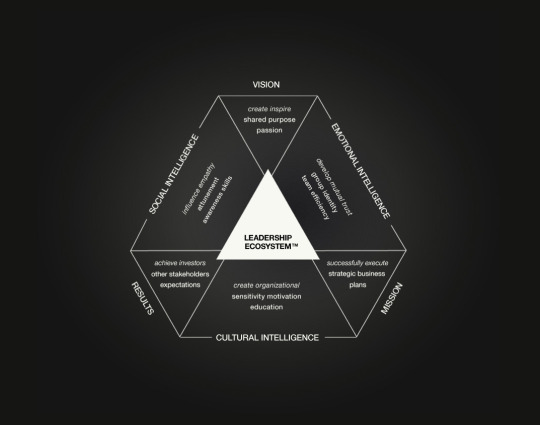Video
youtube
(via Gallons of Light: A Tesla Road Trip | Jordan Bloch)
2 notes
·
View notes
Link
2 notes
·
View notes
Photo

(via Mr. Div And His Fantastical Geometric GIFs [Gallery] | The Creators Project)
1 note
·
View note
Photo

Tumblr making its editorial debut. Simple and impactful design.
(via Storyboard)
0 notes
Link
Go learn how to do something. Some fun classes during the month of May.
0 notes
Link
"To design is much more than simply to assemble, to order, or even to edit; it is to add value and meaning, to illuminate, to simplify, to clarify, to modify, to dignify, to dramatize, to persuade, and perhaps even to amuse." - Paul Rand
0 notes
Text
Welcome to the Era of Design
All businesses, no matter what they make or sell, should recognize the power and financial value of good design.
Obviously, there are many different types of design: graphic, brand, packaging, product, process, interior, interaction/user experience, Web and service design, to name but a few.
In this post, I am referring to design as a broad and deliberately applied discipline, with the aim of creating simpler, more meaningful, rewarding experiences for customers.
0 notes
Text
Steve Jobs: hiring the best is your most important task
Excerpts from the book In the Company of Giants: Candid Conversations with the Visionaries of the Digital World, 1997, published in BusinessWeek in 1998.
What talent do you think you consistently brought to Apple and bring to NeXT and Pixar?
I think that I’ve consistently figured out who really smart people were to hang around with. No major work that I have been involved with has been work that can be done by a single person or two people, or even three or four people. Some people can do one thing magnificently, like Michelangelo, and others make things like semiconductors or build 747 airplanes — that type of work requires legions of people. In order to do things well, that can’t be done by one person, you must find extraordinary people.
The key observation is that, in most things in life, the dynamic range between average quality and the best quality is, at most, two-to-one. For example, if you were in New York and compared the best taxi to an average taxi, you might get there 20 percent faster. In terms of computers, the best PC is perhaps 30 percent better than the average PC. There is not that much difference in magnitude. Rarely you find a difference of two-to-one. Pick anything.
But, in the field that I was interested in — originally, hardware design — I noticed that the dynamic range between what an average person could accomplish and what the best person could accomplish was 50 or 100 to 1. Given that, you’re well advised to go after the cream of the cream. That’s what we’ve done. You can then build a team that pursues the A+ players. A small team of A+ players can run circles around a giant team of B and C players. That’s what I’ve tried to do.
So you think your talent is in recruiting?
It’s not just recruiting. After recruiting, it’s building an environment that makes people feel they are surrounded by equally talented people and their work is bigger than they are. The feeling that the work will have tremendous influence and is part of a strong, clear vision — all those things. Recruiting usually requires more than you alone can do, so I’ve found that collaborative recruiting and having a culture that recruits the A players is the best way. Any interviewee will speak with at least a dozen people in several areas of this company, not just those in the area that he would work in. That way a lot of your A employees get broad exposure to the company, and — by having a company culture that supports them if they feel strongly enough — the current employees can veto a candidate.
That seems very time-consuming.
Yes, it is. We’ve interviewed people where nine out of ten employees thought the candidate was terrific, one employee really had a problem with the candidate, and therefore we didn’t hire him. The process is very hard, very time-consuming, and can lead to real problems if not managed right. But it’s a very good way, all in all.
Yet, in a typical startup, a manager may not always have the time to spend recruiting other people.
I disagree totally. I think it’s the most important job. Assume you’re by yourself in a startup and you want a partner. You’d take a lot of time finding the partner, right? He would be half of your company. Why should you take any less time finding a third of your company or a fourth of your company or a fifth of your company? When you’re in a startup, the first ten people will determine whether the company succeeds or not. Each is 10 percent of the company. So why wouldn’t you take as much time as necessary to find all the A players? If three were not so great, why would you want a company where 30 percent of your people are not so great? A small company depends on great people much more than a big company does.
1 note
·
View note
Text
Future of the Earth, the Solar System and the Universe
600 million years from now we're in trouble.
36,000 years from now
Ross 248 passes within 3.024 light years of Earth, becoming the closest star to the Sun.[3]
42,000 Alpha Centauri becomes the nearest star system to the Sun once more.[3]
50,000 According to the work of Burger and Loutre,[4] at this time the current interglacial ends, sending the Earth back into an ice age, assuming limited effects of anthropogenic global warming.
Niagara Falls erodes away the remaining 20 miles to Lake Erie and ceases to exist.[5]
50,000 Because of tidal acceleration, the astronomical day will now be about 86,401 SI seconds. Under the present day timekeeping system, a leap second will need to be added to the clock every day.[6]
100,000 Proper motion (the movement of stars through the galaxy) will render the constellations unrecognisable.[7]
The hypergiant star VY Canis Majoris will have likely exploded in a hypernova.[8]
250,000 Lo'ihi, the youngest volcano in the Hawaiian-Emperor seamount chain, will rise above the surface of the ocean and become a new volcanic island.[9]
500,000 By this time Earth will have likely been impacted by a meteorite of roughly 1 km in diameter.[10]
1 million Highest estimated time until the red supergiant star Betelgeuse explodes in a supernova. The explosion is expected to be easily visible in daylight.[11][12]
1.4 million Gliese 710 passes within 1.1 light years of the Sun, potentially disturbing the Solar System's Oort cloud and increasing the likelihood of a comet impact in the inner Solar System.[13]
10 million The widening East African Rift valley is flooded by the Red Sea, causing a new ocean basin to divide the continent of Africa.[14]
11 million The moon Phobos collides with the surface of Mars.[15]
50 million The Californian coast begins to be subducted into the Aleutian Trench[16]
Africa will have collided with Eurasia, closing the Mediterranean Basin and creating a mountain range similar to the Himalayas.[17]
100 million By this time, the Earth will have likely been impacted by a meteorite comparable in size to that which triggered the K–P extinction 65 million years ago.[18]
~240 million From its present position, the Solar System will have completed one full orbit of the Galactic center.[19]
250 million All the continents on Earth fuse into a possible supercontinent. Three potential arrangements of this configuration have been dubbed Amasia, Novopangea, and Pangea Ultima.[20][21]
600 million As weathering of Earth's surfaces increases with the Sun's luminosity, carbon dioxide levels in its atmosphere decrease. By this time, they will fall to the point at which C3 photosynthesis is no longer possible. All plants which utilize C3 photosynthesis (~99 percent of species) will die.[22]
600 million Tidal acceleration moves the Moon far enough from Earth that total solar eclipses are no longer possible.[23]
~800 million Carbon dioxide levels fall to the point at which C4 photosynthesis is no longer possible. All plant species die. Free oxygen eventually disappears from the atmosphere.[22] Multicellular life dies out.[24]
1 billion The Sun's luminosity increases by 10%, causing Earth's surface temperatures to reach an average of 47°C and the oceans to boil away.[25] Pockets of water may still be present at the poles, allowing abodes for simple life.[26]
1.3 billion Eukaryotic life dies out. Only prokaryotes remain.[24]
1.5-1.6 billion The Sun's increasing luminosity causes its circumstellar habitable zone to move outwards; all life on Earth dies.[24]
Conversely, as carbon dioxide increases in Mars's atmosphere, its surface temperature rises to levels akin to Earth during the ice age.[27]
~2.3 billion Approximate time until the Earth's outer core freezes, if the inner core continues to grow at its current rate of 1 mm per year.[28][29]
3 billion Median point at which the Moon's increasing distance from the Earth lessens its stabilising effect on the Earth's axial tilt. As a consequence, Earth's true polar wander becomes chaotic and extreme.[30]
3.3 billion 1% chance that Mercury's orbit may become so elongated as to collide with Venus, sending the inner Solar System into chaos and potentially leading to a planetary collision with Earth.[31]
3.5 billion Surface conditions on Earth are comparable to those on Venus today.[32]
3.6 billion Neptune's moon Triton falls through the planet's Roche limit, potentially disintegrating into a new planetary ring system.[33]
5.4 billion With the hydrogen supply exhausted at its core, the Sun leaves the main sequence and begins to evolve into a red giant.[34]
7 billion Collision between the Milky Way and Andromeda galaxies.[35]
7.5 billion Earth and Mars may become tidally locked with the expanding Sun.[36]
7.9 billion The Sun reaches the tip of the red giant branch, achieving its maximum radius of 256 times the present day value.[34] In the process, Mercury, Venus and possibly Earth are destroyed.[37]
During these times, it is possible that Saturn's moon Titan could achieve surface temperatures necessary to support life.[38]
8 billion Sun becomes a carbon-oxygen white dwarf with about 54.05% its present mass.[39][40][41]
14.4 billion Sun becomes a black dwarf as its luminosity falls below three trillionths its current level, while its temperature falls to 2239 K, making it invisible to human eyes.[42]
20 billion The end of the Universe in the Big Rip scenario.[43] Observations of galaxy cluster speeds by the Chandra X-Ray Observatory suggest that this will not occur.[44]
50 billion Assuming both survive the Sun's expansion, by this time the Earth and the Moon become tidelocked, with each showing only one face to the other.[45][46] Thereafter, the tidal action of the Sun will extract angular momentum from the system, causing the lunar orbit to decay and the Earth to spin up.[47]
100 billion The Universe's expansion causes all evidence of the Big Bang to disappear beyond the practical observational limit, rendering cosmology impossible.[48]
450 billion Median point by which the Local Group, the collection of ~47 galaxies to which the Milky Way belongs,[49] will coalesce into a single large galaxy.[50]
1012 (1 trillion) Low estimate for the time until star formation ends in galaxies as galaxies are depleted of the gas clouds they need to form stars.[50], §IID.
2×1012 (2 trillion) All galaxies outside the Local Supercluster are no longer detectable in any way, assuming that dark energy continues to make the Universe expand at an accelerating rate.[51]
3 x 1013 (30 trillion) Estimated time for the white dwarf Sun to undergo a close encounter with another stellar remnant in the local Solar neighborhood. Whenever two objects pass close to each other, the orbits of their planets can be disrupted and the planets can be ejected from orbit around their parent objects. Planets with closer orbits take longer to be ejected in this manner on average because a passing object must make a closer pass to the planet's primary to eject the planet.[52][50], §IIIF, Table I.
1014 (100 trillion) High estimate for the time until star formation ends in galaxies.[50], §IID. This marks the transition from the Stelliferous Era to the Degenerate Era; with no free hydrogen to form new stars, all remaining stars slowly exhaust their fuel and die.[53]
1.1-1.2×1014 (110-120 trillion) Approximate time by which all stars in the universe will have exhausted their fuel (the longest-lived stars low-mass red dwarfs, have lifespans of roughly 10-20 trillion years).[50] After this point, the only stellar-mass objects remaining are stellar remnants (white dwarfs, neutron stars and black holes.) Brown dwarfs also remain.[50] §IIE.
1015 (1��quadrillion) Estimated time until stellar close encounters detach all planets in the Solar System from their orbits.[50], §IIIF, Table I.
By this time, the Sun will have cooled to five degrees above absolute zero.[54]
1019 to 1020 Estimated time until brown dwarfs and stellar remnants are ejected from galaxies. When two objects pass close enough to each other, they exchange orbital energy with lower-mass objects tending to gain energy. The lower-mass objects can gain enough energy in this manner through repeated encounters to be ejected from the galaxy. This process causes the galaxy to eject the majority of its brown dwarfs and stellar remnants.[50], §IIIA;[55]
1020 Estimated time until the Earth's orbit around the Sun decays via emission of gravitational radiation,[56] if the Earth is neither first engulfed by the red giant Sun a few billion years from now[57][58] nor ejected from its orbit by a stellar encounter before then.[56]
2×1036 The estimated time for all nucleons in the observable Universe to decay, if the proton half-life takes its smallest possible value (8.2 x 1033 years).[59][60]
3×1043 Estimated time for all nucleons in the observable Universe to decay, if the proton half-life takes the largest possible value,1041 years,[50] assuming that the Big Bang was inflationary and that the same process that made baryons predominate over anti-baryons in the early Universe makes protons decay.[60] By this time, if protons do decay, the Black Hole Era, in which black holes are the only remaining celestial objects, begins.[53][50]
1065 Assuming that protons do not decay, estimated time for rigid objects like rocks to rearrange their atoms and molecules via quantum tunneling. On this timescale all matter is liquid.[56]
1.7×10106 Estimated time until a supermassive black hole with a mass of 20 trillion solar masses decays by the Hawking process.[61] This marks the end of the Black Hole Era. Beyond this time, if protons do decay, the Universe enters the Dark Era, in which all physical objects have decayed to subatomic particles, gradually winding down to their final energy state.[53][50]
101500 Assuming protons do not decay, the estimated time until all matter decays to iron-56.[56]
[a] Low estimate for the time until all matter collapses into black holes, assuming no proton decay.[56] Subsequent Black Hole Era and transition to the Dark Era are, on this timescale, instantaneous.
Estimated time for a Boltzmann brain to appear in the vacuum via a spontaneous entropy decrease.[62]
Estimated time for random quantum fluctuations to generate a new Big Bang, according to Caroll and Chen.[63]
High estimate for the time until all matter collapses into black holes, again assuming no proton decay.[56]
High estimate for the time for the Universe to reach its final energy state.[62]
Scale of an estimated Poincaré recurrence time for the quantum state of a hypothetical box containing an isolated black hole of stellar mass.[64] This time assumes a statistical model subject to Poincaré recurrence. A much simplified way of thinking about this time is that in a model in which history repeats itself arbitrarily many times due to properties of statistical mechanics, this is the time scale when it will first be somewhat similar (for a reasonable choice of "similar") to its current state again.
Scale of an estimated Poincaré recurrence time for the quantum state of a hypothetical box containing a black hole with the mass within the presently visible region of the Universe.[64]
Scale of an estimated Poincaré recurrence time for the quantum state of a hypothetical box containing a black hole with the estimated mass of the entire Universe, observable or not, assuming Linde's chaotic inflationary model with an inflaton whose mass is 10−6 Planck masses.[64]
0 notes
Photo
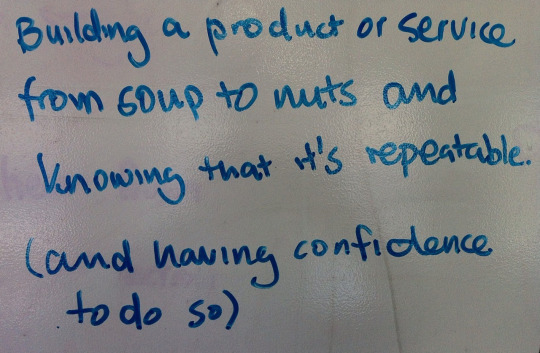
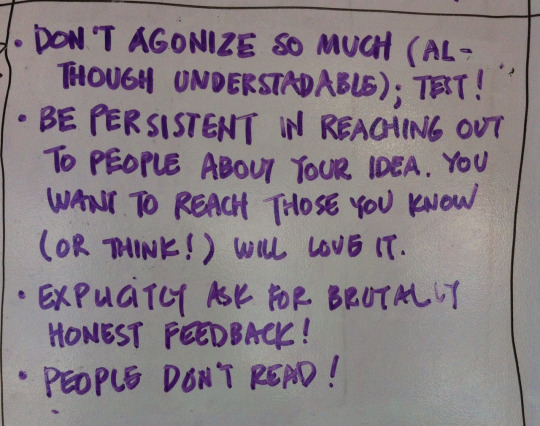
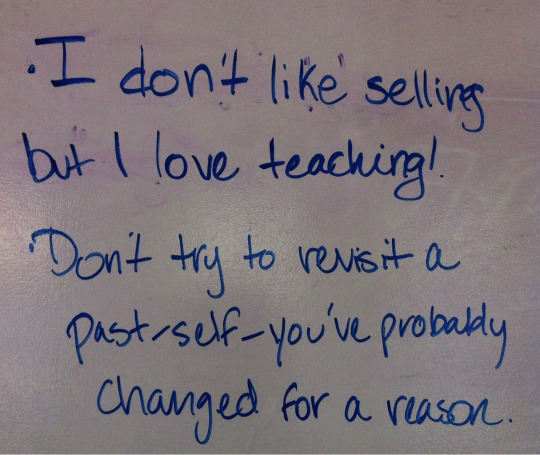
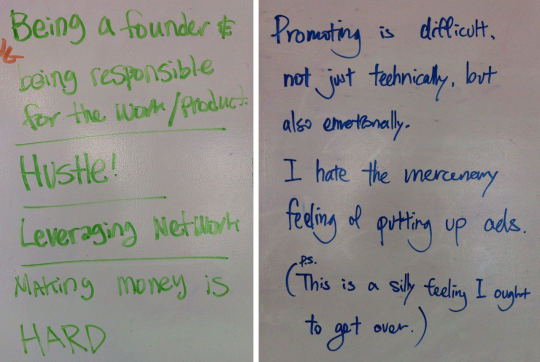

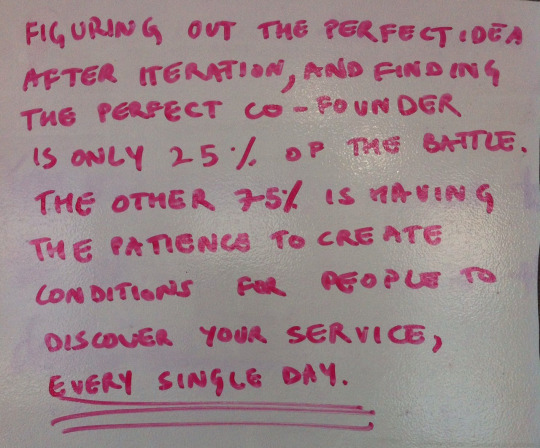
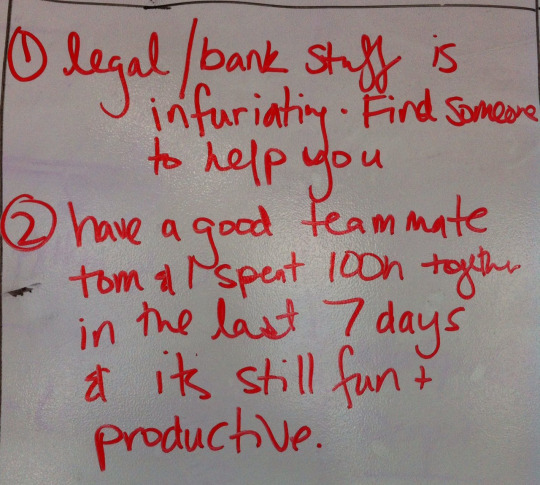

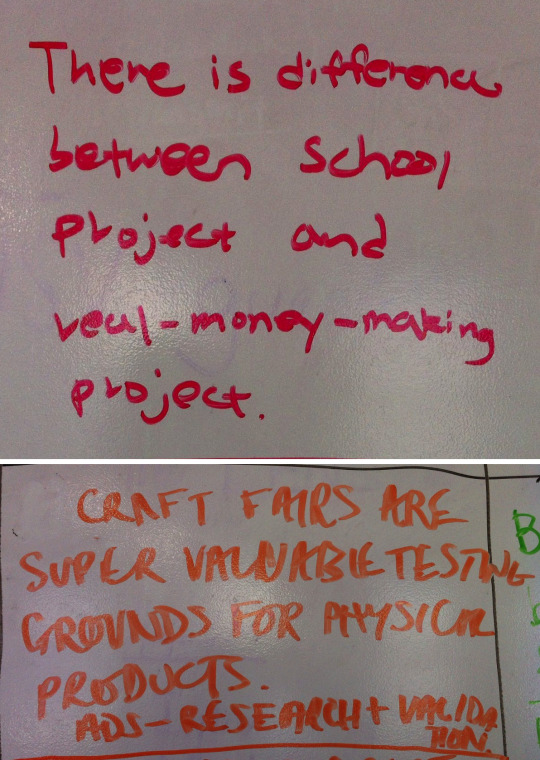
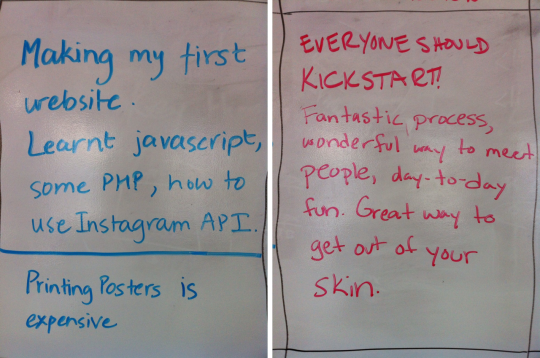
Create and deliver a product or service that generates $1,000 (approximately one month’s rent) of gross profit before the final class on April 25. You can teach Skillshare classes, start a Shapeways or Etsy store, launch a Kickstarter project, or create something else entirely.
What our students learned from their final projects.
20 notes
·
View notes
Photo

For Guts & Fucking Glory (Taken with Instagram at Taqueria Lower East Side)
0 notes

